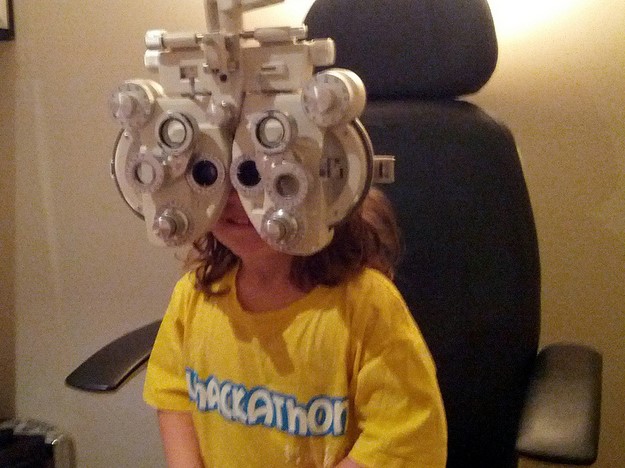Nearly every eye exam dating back decades opens with the reading of an eye chart. The original eye chart was designed by an ophthalmologist named Dr. Hermann Snellen in 1862. The purpose of an eye chart is to measure visual acuity without corrective lenses and the patient’s ability to see things accurately at different distances.
These charts are still very much in use today. The chart is composed of 11 lines of large and small letters in block font. As you move down the chart, each line becomes successively smaller with an increasing number of letters. As you undergo the test you must cover one eye and read the chart from the top on down. When you reach a line of print that you cannot view accurately, this helps the optometrist determine your visual acuity.
Each person taking the eye exam stands 20 feet away from the chart, hence the term ‘20/20’. It indicates the sharpness and clarity by which you are able to see things from 20 feet away. People with 20/20 vision can see things clearly from 20 feet. After that, your vision will be expressed as a fraction. For example, if you have ‘20/40’vision, that means that you must be standing 20 feet away from an object in order to see it as clearly as an individual who has ‘20/20’ eyesight who can see it clearly at 40 feet. You are considered legally blind if your visual acuity is ‘20/200’.
It is not uncommon for each eye to have slightly different visual acuity levels. In fact, one eye may have an altogether different perceptive ability than the other. The eyes are highly sensitive and sophisticated body parts that fulfill a job unlike any other! The purpose of the eye exam is to help determine your visual shortcomings as a precursor to proposing corrective glasses or contact lenses.
So, the next time you walk into an eye doctor’s office, take comfort in knowing the history of the eye chart and how many millions of people it has helped over the last century.
Contact the professionals at Island Eyecare for your next eye exam – we are always happy to serve you!


